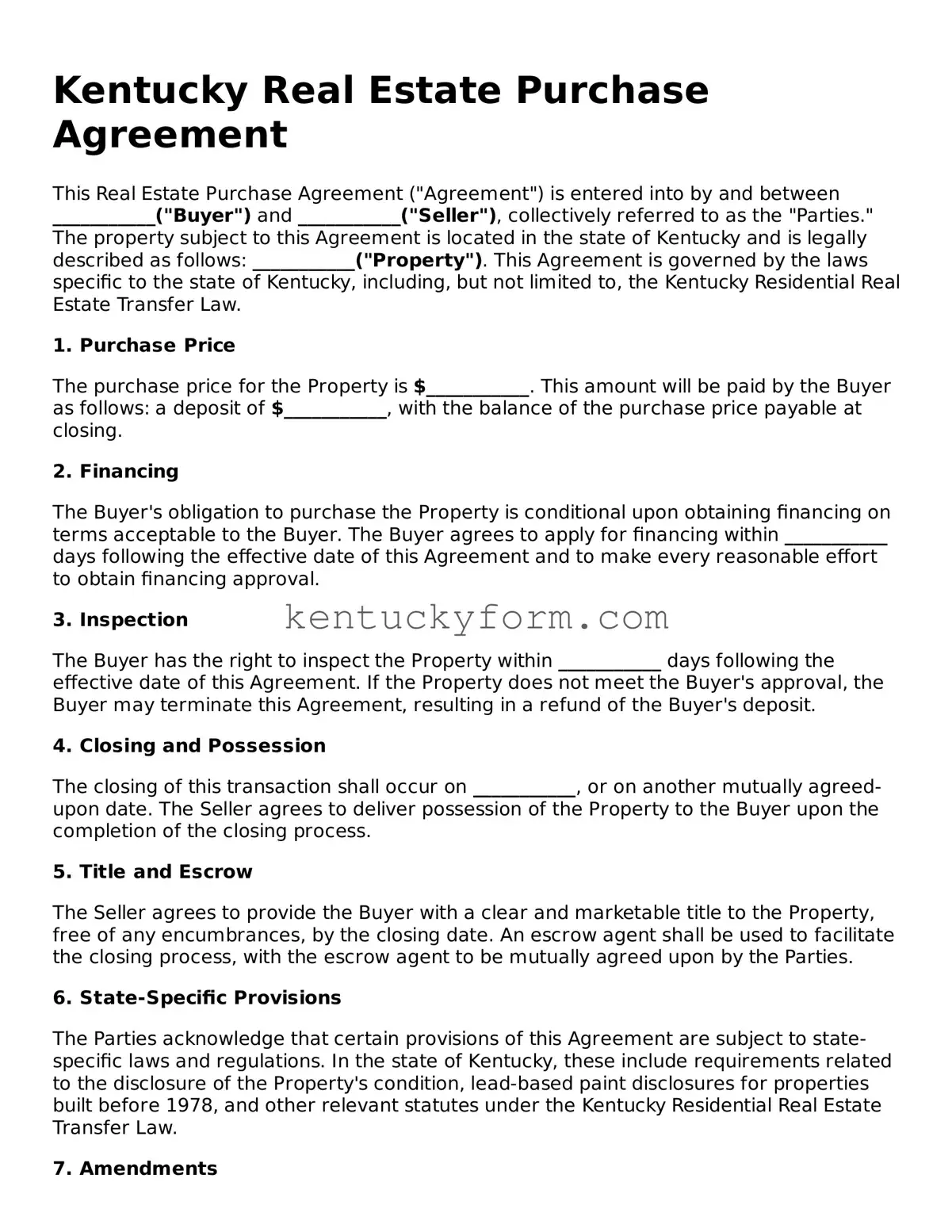Kentucky Real Estate Purchase Agreement
This Real Estate Purchase Agreement ("Agreement") is entered into by and between ___________("Buyer") and ___________("Seller"), collectively referred to as the "Parties." The property subject to this Agreement is located in the state of Kentucky and is legally described as follows: ___________("Property"). This Agreement is governed by the laws specific to the state of Kentucky, including, but not limited to, the Kentucky Residential Real Estate Transfer Law.
1. Purchase Price
The purchase price for the Property is $___________. This amount will be paid by the Buyer as follows: a deposit of $___________, with the balance of the purchase price payable at closing.
2. Financing
The Buyer's obligation to purchase the Property is conditional upon obtaining financing on terms acceptable to the Buyer. The Buyer agrees to apply for financing within ___________ days following the effective date of this Agreement and to make every reasonable effort to obtain financing approval.
3. Inspection
The Buyer has the right to inspect the Property within ___________ days following the effective date of this Agreement. If the Property does not meet the Buyer's approval, the Buyer may terminate this Agreement, resulting in a refund of the Buyer's deposit.
4. Closing and Possession
The closing of this transaction shall occur on ___________, or on another mutually agreed-upon date. The Seller agrees to deliver possession of the Property to the Buyer upon the completion of the closing process.
5. Title and Escrow
The Seller agrees to provide the Buyer with a clear and marketable title to the Property, free of any encumbrances, by the closing date. An escrow agent shall be used to facilitate the closing process, with the escrow agent to be mutually agreed upon by the Parties.
6. State-Specific Provisions
The Parties acknowledge that certain provisions of this Agreement are subject to state-specific laws and regulations. In the state of Kentucky, these include requirements related to the disclosure of the Property's condition, lead-based paint disclosures for properties built before 1978, and other relevant statutes under the Kentucky Residential Real Estate Transfer Law.
7. Amendments
Any amendments to this Agreement must be in writing and signed by both Parties to be effective.
8. Governing Law
This Agreement shall be governed by and construed in accordance with the laws of the state of Kentucky, without giving effect to any choice or conflict of law provision or rule.
9. Signatures
This Agreement shall be signed by the Buyer and Seller and dated as of ___________ (the "Effective Date").
Buyer's Signature: ___________
Seller's Signature: ___________
Date: ___________
